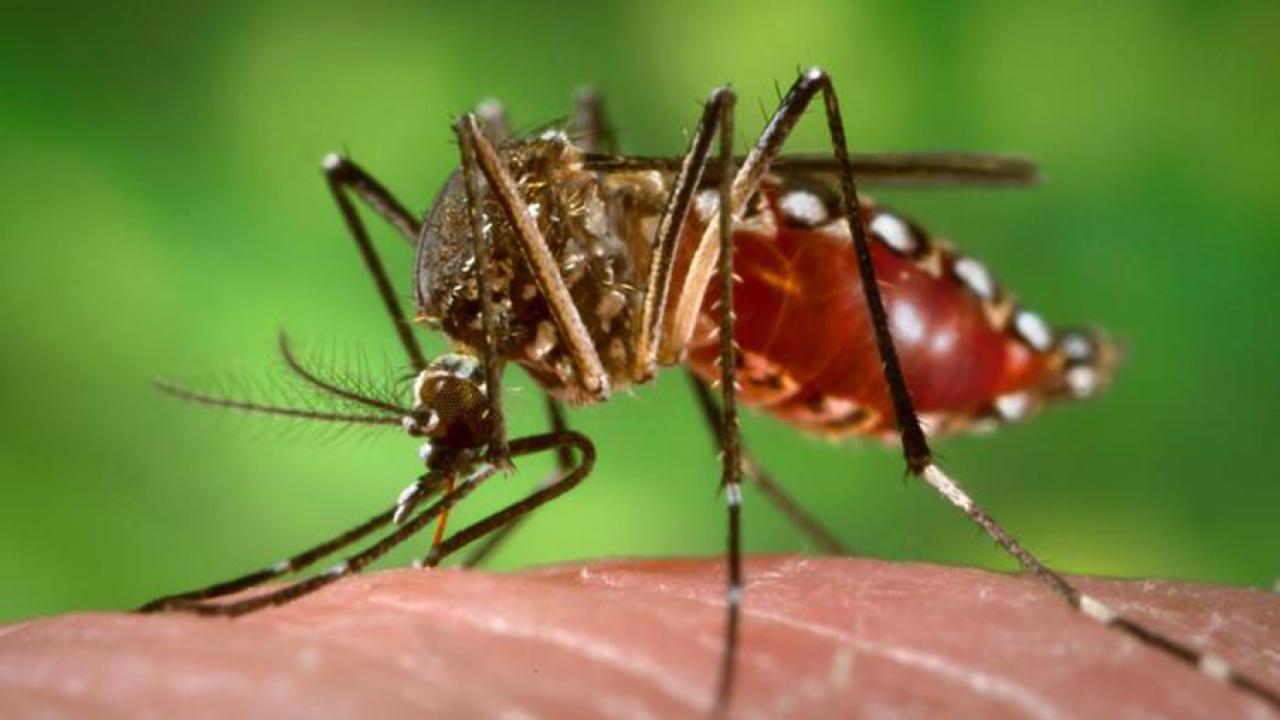
Understanding Zika Virus with Nonhuman Primates
Developing a strategy to prevent and treat Zika virus Research is beginning next week at the California National Primate Research Center (CNPRC) at UC Davis to understand Zika virus. Leading the efforts are Drs. Koen Van Rompay, Eliza Bliss-Moreau, Paul Luciw and John H. Morrison at the CNPRC, and Dr. Lark Coffey, UC Davis. The rapid spread of the virus and potential connection to an otherwise rare birth defect have drawn plenty of attention from the public and from government officials. Koen Van Rompay, DVM, PhD, is an expert in immunology and virology and has been a foremost researcher in HIV / AIDS for over 20 years. He was a leader in helping to bring tenofovir, the leading anti-HIV drug, to people around the world. Van Rompay has teamed up with Lark Coffey, PhD, UC Davis Pathology, Microbiology and Immunology, who has studied related mosquito borne diseases for over 15 years. The team aims to quickly gain an understanding of the virus in order to develop vaccines, treatments and more accurate and rapid diagnostics.

The researchers are joined by Eliza Bliss-Moreau, PhD, and CNPRC Director John H. Morrison, PhD, neuroscientists who will be assessing the impact of Zika virus infection on the brain. Zika virus is an emerging mosquito-borne virus that was first identified in 1947 in rhesus monkeys in the Zika forest of Uganda through a scientific monitoring network looking for yellow fever. It was subsequently identified in humans in 1952 in Uganda and Tanzania. Outbreaks of Zika virus disease have now been recorded in Africa, the Americas, Asia and the Pacific. Until 2007, there had been fewer than 20 documented human cases, followed by mostly local outbreaks in the South Pacific and French Polynesia. But in 2015 the disease made the leap to the Western Hemisphere, affecting more than a million people in Brazil. The World Health Organization has declared the rapid spread of the Zika virus a global emergency. Between January 2014 and February 2016, 33 countries reported cases of Zika. As of Feb. 12, the U.S. Centers for Disease Control and Prevention had tallied 52 reports of travel-associated Zika cases, including two in California. In January, the National Institutes of Health made Zika virus research a high priority, and the NIH is supporting this series of studies of the virus in macaques, monkeys whose physiology and immune systems are similar to humans. The nonhuman primate studies are a critical step in understanding the biology of the virus, how to treat it, and how to prevent infection with a vaccine, with the ultimate goal of preventing an epidemic in both human and wild primate populations. The CNPRC is poised to help respond to this health emergency with the knowledge, resources and expertise in virology and immunology to be able to quickly conduct pilot studies and gain desperately needed knowledge of this fast moving health threat. The first CNPRC pilot study will begin in early March 2016 and will initially involve a small set of rhesus monkeys to first test if the virus from recent outbreaks in Brazil and French Polynesia can infect these nonhuman primates. In a second phase, pregnant female rhesus macaques will be inoculated to understand how and if the virus is affecting the neurodevelopment of the fetus, and where the virus can be found in the body.

studies for Zika virus and the two NPRCs will be closely sharing results to speed the process of discovering testing, prevention and treatment methods. Perhaps most anticipated will be results from planned studies of Zika and pregnancy. It is not clear how the virus is transmitted from mother to fetus. CNPRC expertise from Drs. Morrison and Bliss-Moreau in neurobiology and development may go a long way to understanding that process and how, or whether, having the virus leads to microcephaly – a rare condition associated with incomplete brain development and babies born with a smaller heads than normal. To date, roughly 4,000 cases of microcephaly recently reported in Brazil may be a result of the fast-spreading virus. “Right now it seems there is a strong link between Zika and infection and the microcephaly, but it has not been 100 percent established,” said Dr. Van Rompay. At Davis, Dr. Van Rompay is interested in establishing whether the Zika virus shares traits with other viruses, especially ones in which the virus causes a direct infection of the fetus and causes brain damage.
“A possibility is that the host mother develops an immune response against the virus, and that immune response may somehow contribute to the harmful effects in the fetus,” he said. “The studies that we have planned in monkeys will allow us to evaluate the possibility that Dr. Van Rompay articulates, and also determine whether there are critical time windows during which infection has major consequences for fetal neurodevelopment,” adds Dr. Bliss-Moreau. “We will also be able to determine which brain regions and circuits are most profoundly affected by Zika virus”, added Dr. Morrison.
Zika infection in adults has also been implicated in development of Guillain-Barré syndrome. That autoimmune disease can lead to total paralysis and develops as a result of the immune system attacking a host’s nervous system because of the presence of the viral infection. The expectation is that a vaccine can be developed for the Zika virus rather quickly. The virus is in the same family as yellow fever, for which there is a vaccine, Dr.Van Rompay said. He said it could take a year or so to develop a vaccine to start initial testing in human trials.
